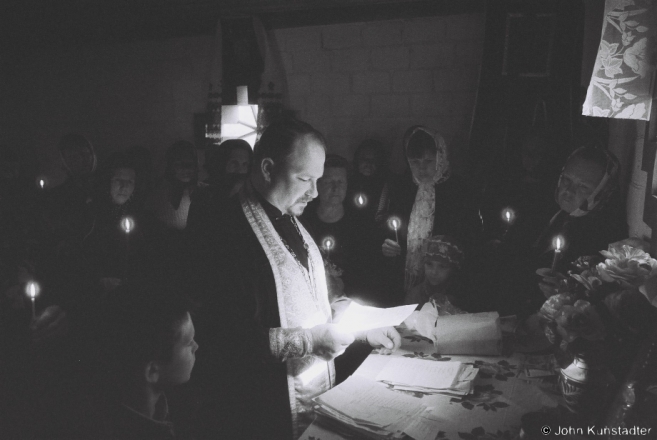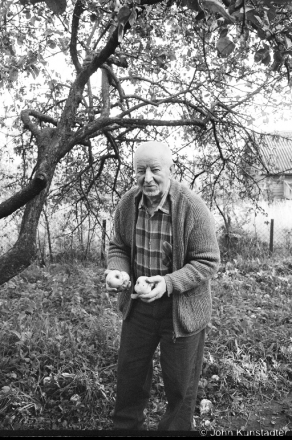I extend a warm invitation to all to attend the opening of the photo exhibition “Неруш” / “Revelation” at 1:00 p.m. August 3, 2014 in the exhibition hall of the Belarusian Orthodox church of St. Cyril of Turau, 401 Atlantic Avenue, Brooklyn, New York. The exhibition will run until September 2. Nearest subway stations: Hoyt Street (2,3), Hoyt-Schermerhorn (A, C, G), Nevins Street (2, 3, 4, 5).
Сардэчна запрашаю ўсіх на адкрыцьцё выставы “Неруш“, якое адбываецца 3 жніўня а 13:00 гадзіне у залі беларускай царквы Сьв. Кірылы Тураўскага, 401 Атлянтык Авэню (401 Atlantic Avenue), Бруклін, Нью-Ёрк. Выстава будзе працягвацца с 3 жніўня па 2 верасень. Найбліжэйшыя станцыі мэтро: Hoyt Street (2,3), Hoyt-Schermerhorn (A, C, G), Nevins Street (2, 3, 4, 5).
Revelation (Njerush)
Two forces inspire this exhibition.
First, the poetry of the great European poet Ryhor Baradulin (1935-2014), the national poet of Belarus. It was a privilege to know him, and his poem “Неруш“ (“Njerush” — Revelation), a paean to the Belarusan language, gave me the title for the exhibition.
Second, abiding reverence for the common man, in the spirit of Christ’s words “You are the salt of the earth…You are the light of the world.”
In these regards, photography in Belarus continues to inspire me in three ways.
First, to chronicle the Belarusan Book of Hours: the cycle of the Belarusan year and the new birth of faith as they are infused by, and infuse, the specific melody of the Belarusan language, the specific Belarusan light, the specific Belarusan sense of place.
Second, to chronicle the depth, resilience, and — again — specificity, yet inherent Europeanness, of Belarusan culture, of Belarusanness. I have witnessed innumerable times how the heart of the Belarusan nation beats in every child, even the smallest child; how the national language sings out in every gesture, in every smile; how Belarusans quietly but firmly live the words of another great Belarusan poet, Maksim Bahdanovich, in his poem “The Chronicler”:
“Thus the modest but devoted bee knows to make honey even from bitter flowers.”
I would feel most fortunate if you the viewer sensed the reflection of these melodies, these rhythms, this devotion in the photographs in this exhibition.
Third, to suggest how the fate of our nation is linked to that of the Belarusan nation. We would not be Americans were it not for the crucial help of Tadevush Kas’tsiushka. We have always honored him as a Pole, as Tadeusz Kosciuszko. Yet, born at Merachoushchyna in the heart of the western Belarusan lands, Kas’tsiushka was a son of Belarusan soil.
In a larger sense, I would recall that the dignity of our nation lies in our identity as a nation of the common man. And anyone who grew up as I did in Chicagoland, or in Pittsburgh, Cleveland, or other American towns and cities across the heartland, knows how the Belarusan common man and others living under the injustice of empire in the same region — Poles, Lithuanians, Ukrainians, and many others — have made the arduous journey to America;
how these decent and industrious people have become part of our nation;
how they have built our nation;
how they have played an integral role in determining who we are, and why.
So in looking at the faces in these photographs we are also looking in good measure at ourselves.
Неруш
У гэтай выставы дзве крыніцы натхненьня.
Першая крыніца – творчасць еўрапейскага паэта Рыгора Барадуліна (1935-2014), народнага паэта Беларусі. Я меў гонар быць з ім знаёмым, і выстава названая паводле яго верша “Неруш”, хваласьпева мове беларусаў.
Другая крыніца – глыбокая пашана да такіх людзей, пра якіх Хрыстос гаварыў: “Вы – соль зямлі… Вы – сьвятлo сьвету”.
Гэтае натхненьне вядзе мяне ў фатаграфічнае падарожжа па трох сьцежках.
Першая – занатоўка беларускага брэвіярыя – кола году і хронікі новага нараджэньня веры – як праявы і прычыны адметнага беларускага асьвятленьня, адметнага беларускага водару глебы і адметнага беларускага пачуцьця повязі з радзімай.
Другая – спроба адлюстраваць глыбокую, нязломную і, зноў жа, адметную і неадʼемную еўрапейскасьць беларускай культуры, беларускай сутнасьці. Незьлічоную колькасьць разоў я быў сьведкам таго, што сэрца беларускай нацыі бʼецца ў кожным малым, нават у немаўляці, што мова нацыі сьпявае ў кожным жэсьце і кожнай усьмешцы, што беларусы сьціпла і непахісна спраўджваюць словы Максіма Багдановіча:
“Так рупная пчала ўмее ў соты мёд сабраць і з горкіх кветак.”
Я буду шчасьлівы, калі глядач ўбачыць і пачуе адбітак гэтых мелодый, гэтых рытмаў, гэтай руплівасьці ў працах экспазіцыі.
Трэцяя сьцежка, спадзяюся, вядзе мяне да глыбейшага разуменьня повязі лёсаў нашай нацыі і нацыі беларускай. Мы не былі б амэрыканцамі, калі б не лёсавызначальная дапамога Тадэвуша Касьцюшкі. Мы заўсёды шануем Касьцюшку як паляка, а ён, народжаны ў Мерачоўшчыне, у сэрцы заходніх беларускіх земляў, ёсьць сынам беларускай глебы.
Калі разважаць шырэй, трэба прыгадаць, што гонар нашай нацыі ў тым, што мы ўсьведамляем сябе як нацыя простага чалавека. Кожны, хто вырас на Чыкагшчыне, як я, ці ў Пітсбургу, Кліўлендзе ці любым іншым горадзе сэрца Амэрыкі, ведае, як простыя беларусы і прадстаўнікі іншых нацый, што існавалі пад імперскім уціскам ў тым жа рэгіёне, – палякі, літоўцы, украінцы і многія іншыя – прайшлі свой цяжкі шлях да Амэрыкі, як гэтыя годныя і працавітыя людзі сталі часткай нашай нацыі,
як яны будавалі нашу нацыю,
як яны адыгралі неад’емную ролю ў вызначэньні, кім мы ёсьць і чаму.
Разглядаючы твары на гэтых фатаграфіях, па вялікім рахунку мы глядзім на саміх сябе.

